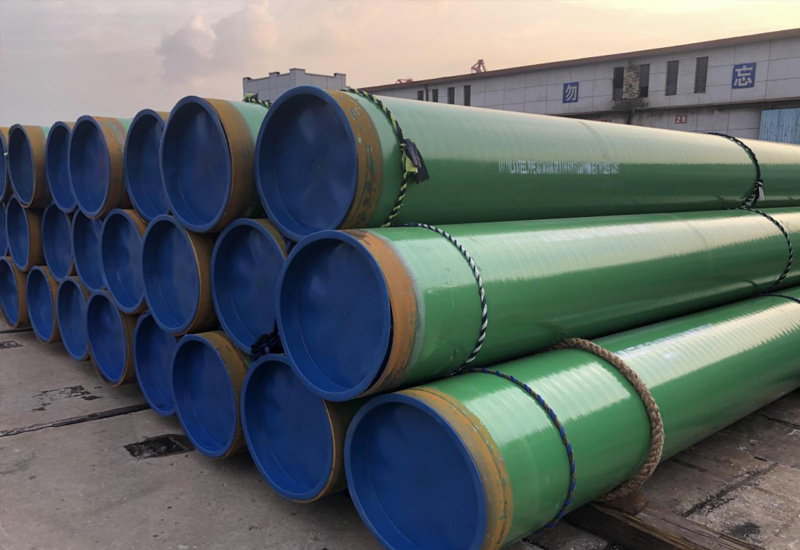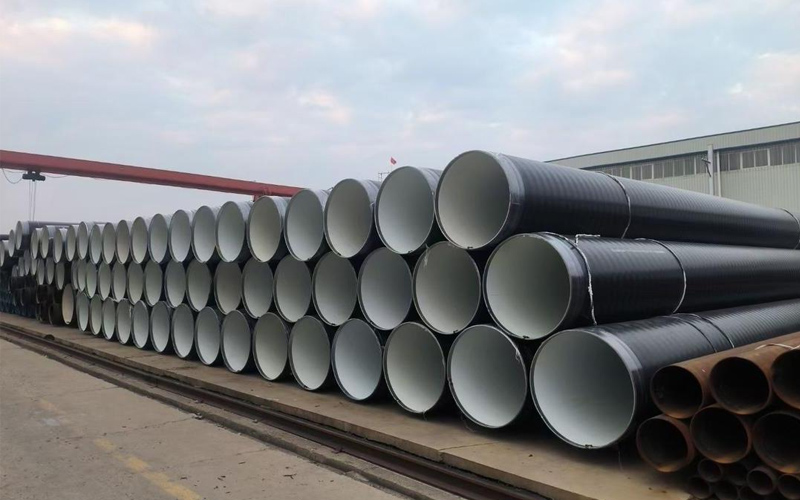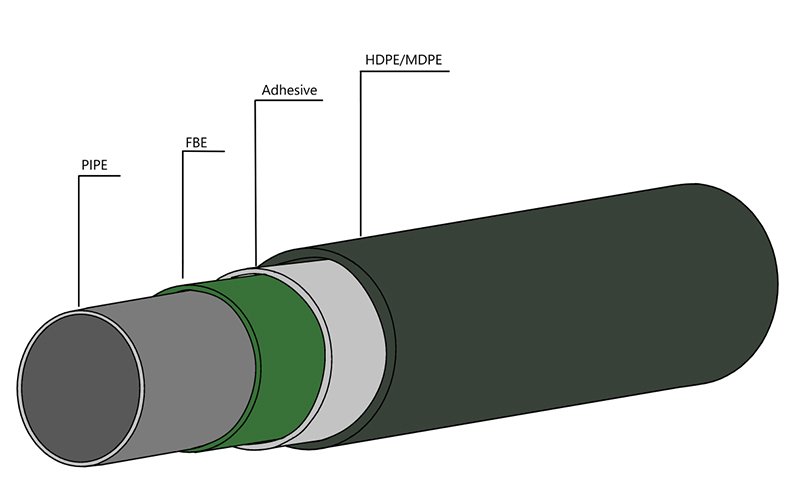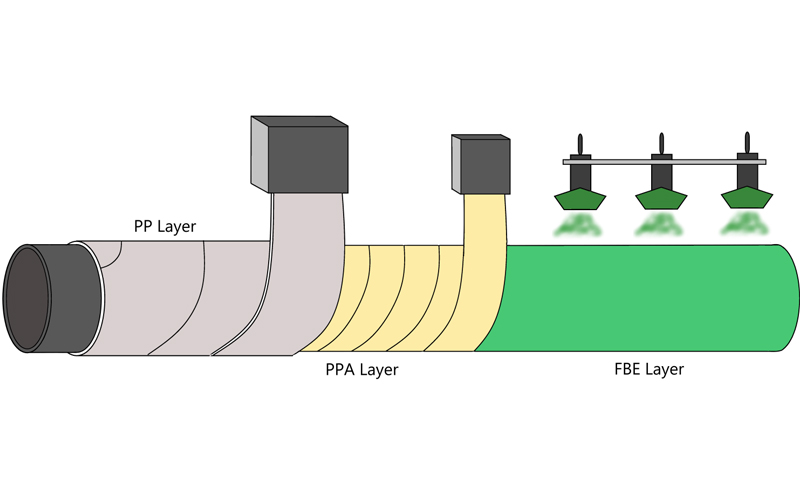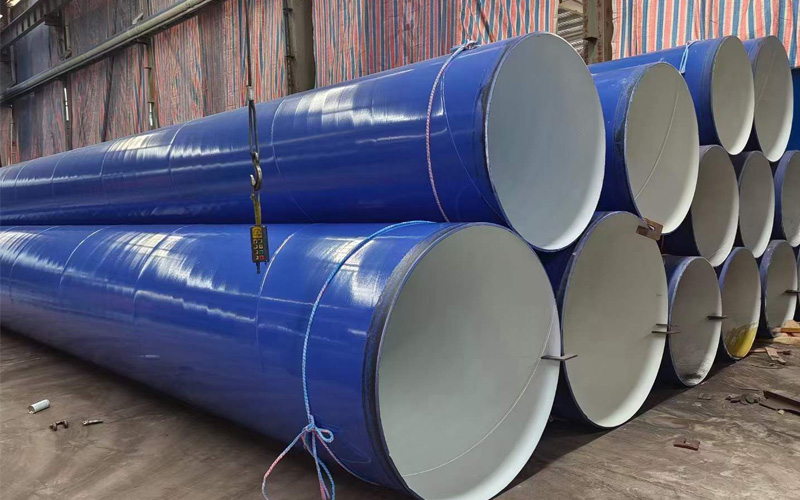A Technical Comparison: ASTM A106 vs. API 5L for High-Pressure Service
Imagine that a piping engineer is reviewing blueprints of a high-pressure system and finds two specifications: ASTM A106 and API 5L. Both of them are carbon steel pipes with similar appearance and the same rated pressure, but they are not interchangeable. This common situation emphasizes an important fact: overlapping mechanical properties are not equivalent to interchangeability. ASTM A106 is designed for high-temperature “process pipes”, while API 5L (and API 5L steel pipe) are designed for long-distance “pipeline” transportation. Below, we use hard data and technical analysis to break down their differences, helping teams make code-compliant choices.
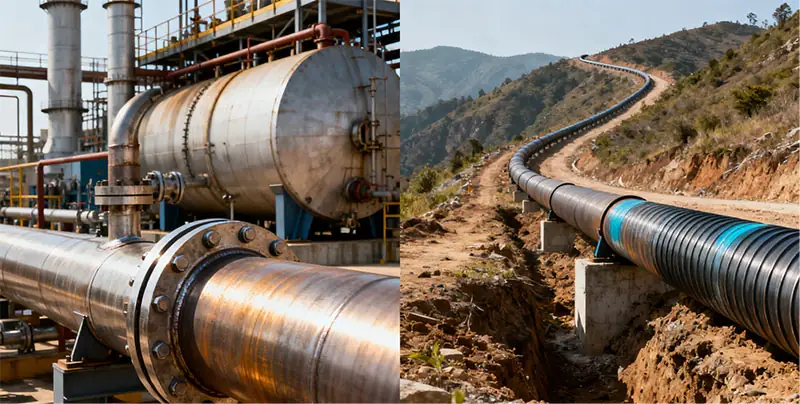
Definitions and core Applications: what makes them different?
In order to understand these standards, let’s start with their uses-each one is designed for different role, even though they are all carbon steel pipes.
ASTM A106: The High-Temperature Specialist
ASTM A106‘s official name—Standard Specification for Seamless Carbon Steel Pipe for High-Temperature Service—says it all. There are two terms that are not negotiable: seamless and high temperature.
Seamless manufacturing eliminates the welding weakness that fails at extreme high temperature, making ASTM A106 ideal choice for continuous high temperature systems. Typical applications include:
· Steam pipes in power plant (fluids with temperatures exceeding 300 degrees Celsius).
· Refinery boiler feedwater lines (withstanding pressure and thermal stress).
· Chemical plant production lines (transporting hot gas/liquid).
In short, ASTM A106 is suitable for “in-plant” high temperature and high pressure pipelines-controlled but demanding environment.
API 5L: The Long-Distance Transport Expert
API 5L’s full title—Specification for Line Pipe—focuses on long-haul durability, not temperature. It gives priority to resisting external influences (soil movement, construction damage) and the expansibility of large-scale installation.
API 5L steel pipe is the pillar of global infrastructure. Main applications:
· Cross-country oil/gas pipelines (spanning hundreds of kilometers).
· Offshore pipeline systems (connecting platforms with coast).
· Municipal water pipes (supplying cities).
Unlike ASTM A106, API 5L allows multiple manufacturing processes (seamless, welded, spiral-welded) and scales to very large diameters—critical for moving high volumes over long distances.
Quantitative Analysis: Comparison of Technical Specifications
To understand why ASTM A106 and API 5L are not interchangeable, please compare their most commonly used grades: ASTM A106 B and API 5L B (PSL 1) Their “Grade B” label is misleading-their specifications are very different.
| Feature | ASTM A106 | API 5L (PSL 1) | Engineering meaning |
| carbon content | Maximum 0.30% | Maximum 0.28% (seamless) | the high carbon content of ASTM A106 improves the high temperature strength, which is the key to its use case |
| Yield strength | Minimum 35,000 psi | Minimum 35,000 psi | Same baseline compressive strength, but no further similarity |
| tensile strength | 60,000 psi minimum | 60,000 psi minimum | Equal tensile strength is not equal to performance-environment (heat, environment) is very important |
| high temperature performance | Mandatory: rated temperature up to 650 degrees Fahrenheit (350 degrees Celsius) | Optional: no high temperature rated temperature | Key difference: ASTM A106 is the only choice for heat-intensive systems |
| toughness Testing | Optional (client-specified) | Optional (PSL 1); Mandatory (PSL 2) | Baseline grades skip低温韧性 testing, but API 5L has an upgrade path (PSL 2) |
| size Range | Typically NPS 48 and below | Up to NPS 80+ (LSAW/SSAW included) | API 5L (and API 5L steel pipe) supports larger diameters for high-volume transport |
| manufacturing process | Seamless only | Seamless, ERW, LSAW, SSAW allowed | Seamless rules of ASTM A106 avoid welding failures; The flexibility of API 5L reduces the cost |
Important point: the same strength value does not mean similar performance. ASTM A106 gives priority to high heat resistance and elasticity, while API 5L gives priority to transportation expandability.
The role of PSL: Why the new PSL protocol is important for key applications
API 5L has two grades-PSL 1 (baseline) and PSL 2 (enhanced) -which changes its adaptability to high-pressure applications. Understanding them is key to choosing the correct API 5L steel pipe.
PSL 1: The Basic Grade
PSL 1 meets minimum requirements of API 5L (chemical/mechanical specifications). It is suitable for non-critical purposes: low-pressure water pipes or land oil pipelines with mild climate. However, it lacks rigor for extreme conditions (low temperature, offshore service).
PSL 2: The High-Performance Upgrade
Based on PSL 1, PSL 2 has stricter controls, making it ideal choice for high-risk and high-pressure work-in some cases, it even exceeds ASTM A106. Major improvements:
· Stricter chemical properties: Limits impurities (sulfur, phosphorus) to reduce the risk of corrosion and brittle fracture.
· Mandatory Toughness Testing: Requires Charpy V-notch tests to resist shocks or cold—critical for offshore/cold-climate pipelines.
· Rigorous NDT: More ultrasonic weld testing to catch hidden flaws, aligning with high-stakes applications.
The new PSL agreement is usually mandatory for offshore natural gas pipelines or transportation under extreme pressure. However, it still can’t replace ASTM A106 in high temperature systems.
Conclusion: The Actionable Decision
The bottom line: ASTM A106 and API 5L (including API 5L steel pipe) are not interchangeable. Swapping them brings the risk of failure, security problems or code violations. Choose with this framework.
If ASTM A106 is selected
Your system involves high temperatures (steam, boiler feed water, heated process fluids). Its mandatory 650 ° f (350 ° c) rating and seamless design make it the only code-compliant option.
The pipeline is used for “in-factory” use (not long-distance transportation).
If API 5L is selected
Your project is long distance transportation (oil, natural gas, water). This is a global pipeline standard with size/scalability suitable for large capacity.
You need extreme durability (offshore and cold climates). API 5L PSL 2 is selected for forced toughness test.
The last explanation about grade b.
Never mix ASTM A106 Grade B and API 5L Grade B. Their identical strength numbers hide different goals—ASTM A106 for heat, API 5L for transport. Choosing wrong one will take time, money and security.
Share:
Get Your Custom Steel Pipe Quote Today!
Provide us with your project details (like application, specifications, quantity). Our experienced team will respond with a tailored solution and competitive quote within 24 business hours.
Related Articles
ASTM A53 vs. API 5L: A Guide to Selection and Application
Introduction:Technology differences determine success or failure, and selection needs to be “precise”
Steel Density Analysis: Core Differences between Mild and Medium Carbon Steels and Industrial Applications
3LPE coated steel pipe: a solid barrier in the field of industrial corrosion protection
3LPP coated pipe: anti-corrosion guard in high temperature and high pressure environment
FBE steel pipe: the technological armor of the steel defense line
HOT TAGS
近期文章
- 3LPE coated steel pipe: a solid barrier in the field of industrial corrosion protection
- Breakthrough of spiral welded pipe technology: How does SSAW steel pipe conquer the water supply project in rugged mountain areas of South America?
- What is offshore pipeline and its Applications in offshore oil and gas development
- 3PP Coating for High-Temp Pipe Corrosion | Case Study
- A Guide to ISO 21809: 3LPE & FBE Pipe Coating Standards




